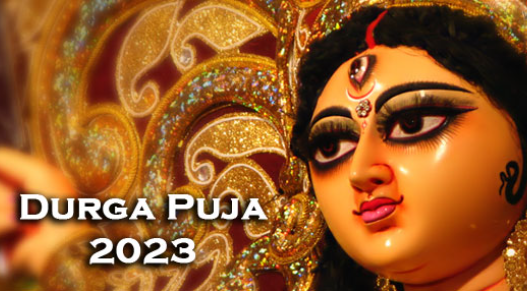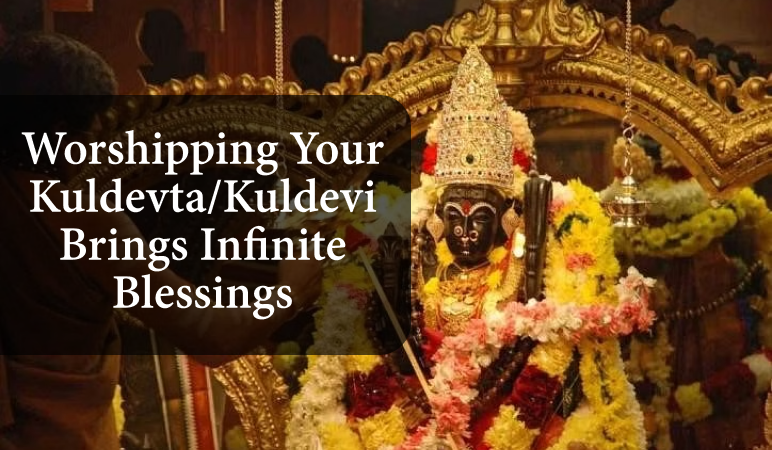Vahan of Maa Durga this Durga Puja 2023

Every year during Navratri and Durga Puja, Maa Durga chooses different modes of transportation to arrive on Earth from the Himalayas, which is believed to be her in-law’s home by her devotees. Every Durga Puja and Navratri, she comes to meet her devotees on Earth and bless them abundantly. It is time to celebrate Maa Durga’s victory over the demon Mahisasura.
On Which Vahan Maa Durga is Arriving This Year?
During Navratri, many rituals are performed for ages and they differ from region to region within and outside a state. One thing that makes her devotees anxious is the vehicle (Vahan) in which she arrives every time. In Sanatan Hindu belief, nothing happens without a reason. We believe everything in the Universe is interconnected and has a deep meaning, and so is Maa Durga’s Vahan, on which she arrives. There is significance to the vehicles she chooses to arrive in. Apart from her most essential Vahan lion, which she rides all the time, she possesses four more Vahans, namely, the elephant, horse, boat and palanquine.
This year on Sharadiya Durga Puja/Navratri 2023, Goddess Durga is arriving on horseback and will return, too, on horseback (Calendars that believe in exact Tithi). However, according to some calendars, she is coming on an elephant (that is based on the Uday Tithi, after the Sunrise). Let us see how to find out on which Vahan she is arriving on Durga Puja 2023.
How to Find Out On Which Vahan Maa Durga is Arriving?
As mentioned in Devi Puran,
दिनशशि सूर्य गजरुढा शनिभौमै तुरंगमे।
गुरौशुक्रेच दोलायां बुधे नौकाप्रकीर्तिता॥
गजेश जलदा देवी क्षत्रभंग तुरंगमे।
नौकायां कार्यसिद्धिस्यात् दोलायों मरणधु्रवम्॥
Meaning
रविवार और सोमवार को भगवती हाथी पर आती हैं, शनि और मंगल वार को घोड़े पर,
बृहस्पति और शुक्रवार को डोला पर, बुधवार को नाव पर आती हैं।
दुर्गा हाथी पर आने से अच्छी वर्षा होती है, घोड़े पर आने से राजाओं में युद्ध होता है।
नाव पर आने से सब कार्यों में सिद्ध मिलती है और यदि डोले पर आती है तो उस वर्ष में अनेक कारणों से बहुत लोगों की मृत्यु होती है।
The above verse signifies, Maa Durga’s mode of transportation for arrival, that depends on which day the Devi Paksha starts. Mahalaya Amavasya is the day that marks the end of the Pitru Paksha period and the beginning of the Devi Paksha.
The choice of the mount that Maa Durga chooses to arrive during Navratri and Durga Ouja every year depends on the day of the week that the festival begins. It is the same for the vehicle while departing after the puja is over. It is believed that on Sundays and Mondays, the mother arrives and departs on elephant back; on Tuesdays and Saturdays, riding a horse; on Wednesdays, by boat; and on Thursdays and Fridays, through a palanquin.
Normally, she does not arrive and depart by the same vehicle, and if she does so, it is not considered a good indication for mankind and their welfare.
The weekday on which Navratri or Devi Paksha starts is considered as the day of Durga Arrival. As per the above verse, if Maa Durga arrives on Tuesday or Saturday, then it is believed that she comes mounted on a horse. Arriving on a horse is not regarded as very auspicious. It is believed that it is an indication of a likely war between nations. This year on Navratri/Durga Puja, Maa Durga is arriving on horseback and even returning on horseback, which is a rare incident.
When is Durga Puja and Navratri 2023 starting?
The Shardiya Navratri/Durga Puja is just around the corner. The festival starts with the Pratipada Tithi and continues until the Navami Tithi of Ashwin Shukla Paksha. On Dashami Tithi, Durga Visarjan takes place. The day is celebrated as Vijaydashami, also known as Dussehra, and with this, the festival comes to an end. This year, Shardiya Navratri will begin on October 15 and end on October 24 with Durga Visarjan and Vijaydashami. The Pratipada Tithi of Shukla Paksha of Ashwin month will begin at 11:24 p.m. on October 14 (as per Bengali calendar) and end at 1:32 a.m. on October 16. So, the beginning of the Pratipada tithi is also known as the commencement of Devi Paksha, that is, it is the time of Maa Durga’s arrival. However, since the Pratipada tithi begins late in the evening, Shardiya Navratri starts on October 15 on Uday Tithi.
Among many Hindu festivals, Navratri and Durga Puja are the most prominent ones. Though both festivals are dedicated to Goddess Durga and the significance of celebrating them is the same, the fact is, that both are celebrated differently and in different regions of the country. While West Bengal, Odisha, Bihar, Jharkhand and other states of eastern India celebrate Durga Puja mostly, the rest of India celebrates Navratri (nine nights) and Dussehra (on Vijaya Dashami day).
Different Vahans of Maa Durga and their Significance
Lion
The roaring lion is the most essential Vahan of Maa Durga. According to the scriptures, the lion was gifted to her by the king of the mountains when many Devis and Devatas were handing over different weapons to her to prepare her for the head-to-head battle with Mahishasura. The lion symbolises leadership, courage, strength, willpower, resolve and perseverance. The lion is also a symbol of ‘Dharma’, and Maa Durga symbolises all of these aspects.
Elephant
The elephant is the symbol of peace and wealth. If Maa Durga arrives or departs on an elephant, it means an abundance of all good things that will fill your life with happiness and joy. Maa Durga’s arrival on an elephant is seen as auspicious. It is expected to bring good rains and an abundance of harvest. The year in which she arrives on an elephant is full of prosperity, happiness and a life full of good fortune.
Boat
The boat indicates a flood and a good harvest. When Maa Durga appears on a boat, it means you will achieve your ultimate goal. The boat is considered good for the world, though the results will be for a short period of time. It is expected to bring a good monsoon, fertile soil, an abundance of harvest and overall prosperity.
Palanquin
Maa Durga’s entry on the palanquin, according to the scriptures, indicates the start of an epidemic. The Palanquin Mount of Maa Durga is not considered good. It is an indication of bad times and something widespread, like an epidemic. Worshipping the mother can help us face the challenge together.
Horse
The Goddess Durga arriving on horseback is not considered auspicious. According to the scriptures, it is a hint of an approaching war, draught and mass killing. The horse, being the animal used in wars and conflicts since ancient times, is viewed as an indicator of destruction. If she is arriving or departing on horseback in a particular year, it will prove to be very unfortunate for mankind. Seeking her blessings during Durga Puja or Navratri will give people strength to face the approaching difficult times.
Frequently Asked Questions
Q: What is the significance of the arrival and departure of Goddess Durga in different mounts every year?
A: While Durga Puja is a highly auspicious festival for Sanatan Hindus across the world and is celebrated extravagantly, the different Vahans or modes of transport, Maa uses for her annual visit are considered no less important. The choice of transport Maa makes during this festival is believed to indicate how the coming year is going to be for mankind.
Q: Who is Goddess Durga?
A: Durga is the supreme goddess, the Devi Shakti, the consort of Mahadev. She is also known as Mahadevi and the term Durga means ‘the invincible’ or unconquerable’. She is the embodiment of all universal energy (shaktis), the centre of universal powers, and is revered as the prime female deity of the Hindu pantheon. She is referred to as Swayambhu, and she is Adi Parashakti, which means she is eternal with no beginning or end.
Q: What is the significance of Sharadiya Navaratri?
A: Sharadiya Navaratri is one of the grandest Sanatan Hindu festivals that is celebrated every year during the Hindu month of Ashwin (September-October) and is also referred to as Durga Puja. It is a nine-day celebration during which, each of the nine forms of Devi Durga, also referred to as ‘Navadurgas’, is invoked and worshipped. Though there are four Navratris a year, one in every season, the Sharadiya Navaratri is very widely celebrated in a grand way. In West Bengal, the festival is marked as Durga Puja and is celebrated in the grandest way on the day of Shasthi. It is a five-day festival in the state.
For more insights on Maa Durga, Navratri and Durga Puja, you can consult our pandits and astrologers here.









